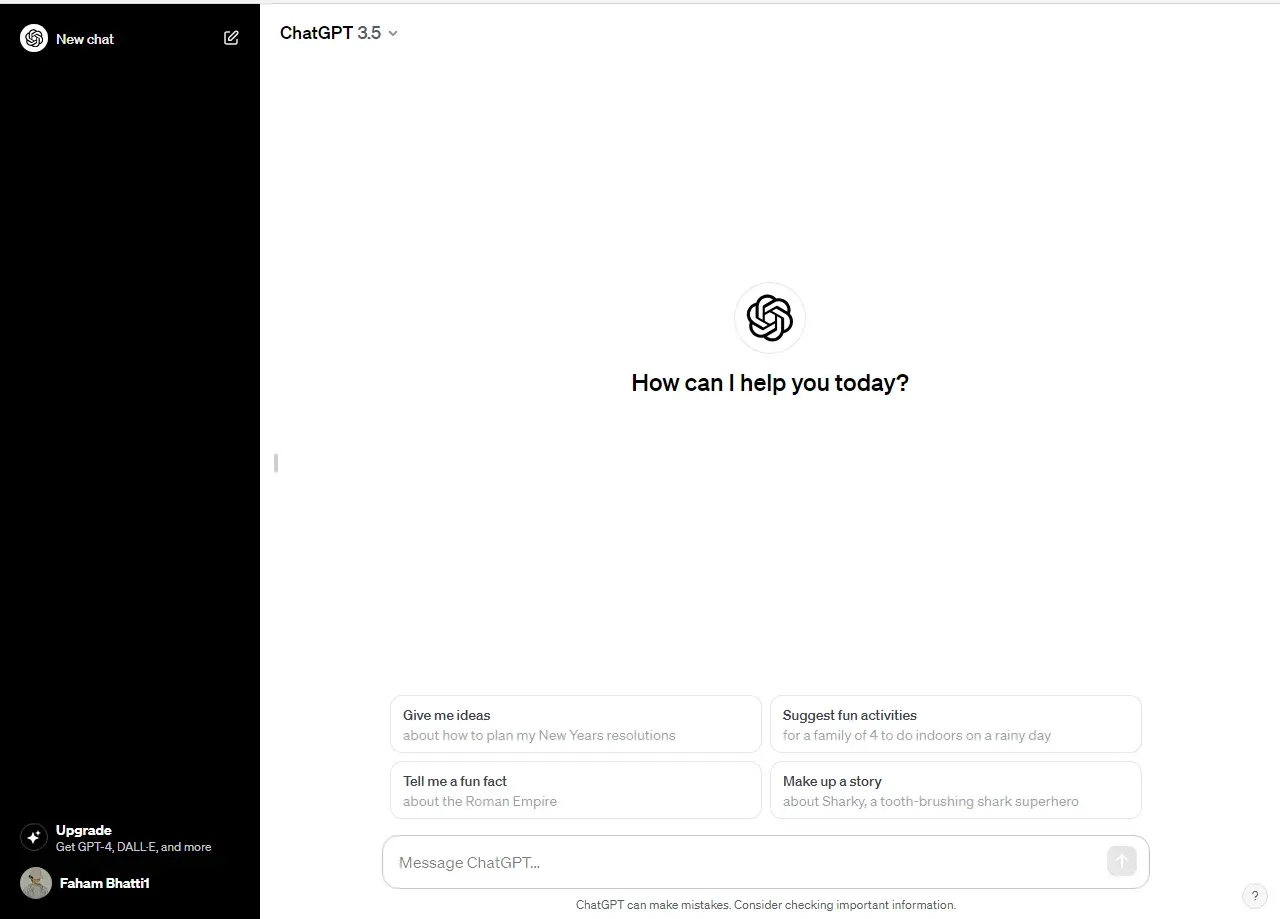Hello, guys, I hope you all are doing well. In today's article, we will be comparing ChatGPT and ChatSonic. This is a good comparison because ChatSonic is its competitor. So, if you want to know which one is perfect for you, stay with us in this article.
In the world of artificial intelligence, selecting the best AI for oneself can be challenging. So, in today's article, we'll discuss the details of their features, performance, and drawbacks to help you make an informed decision when choosing between ChatGPT and ChatSonic.
Understanding ChatGPT
ChatGPT is a smart language tool powered by OpenAI's GPT-3.5 technology. It's really good at creating responses that sound natural and make sense. But, it has a few limitations, especially when it comes to letting developers customize it. ChatGPT works great for everyday conversations, but it might not be as personalized as some users would like it to be.
Understanding ChatSonic
Meanwhile, ChatSonic stands out by using its special SonicNet language model. It's all about creating conversations that feel really human. What makes ChatSonic special is that you can customize and tweak it a lot, making it perfect for situations where you want the conversation to feel unique and personalized.
Feature Comparison
| Feature | ChatGPT | ChatSonic |
|---|---|---|
| Language Model | Utilizes OpenAI's GPT-3.5 architecture | Employs a proprietary SonicNet language model |
| Conversational Quality | Natural and coherent responses | Emphasis on human-like conversation flows |
| Customization | Limited fine-tuning options for developers | Offers extensive customization and fine-tuning |
| Integration | Easy integration through OpenAI API | Seamless integration into various platforms |
| Training Data | Broad and diverse dataset | Trained on a curated dataset for specific contexts |
| Scalability | Scales effectively for various applications | Designed for scalability in enterprise solutions |
| User Interface | No native UI, requires integration | Provides a user-friendly interface for customization |
| Cost | Pricing based on OpenAI API usage | Subscription-based pricing with customization options |
Analyzing Results
Looking at the scores and ratings, it's clear that both products have their strong points. ChatGPT is really good at creating natural-sounding language, while ChatSonic shines when it comes to customizing and fine-tuning. So, the decision between the two really comes down to what you need and what you like.
Drawing Conclusions
To sum it up, if you're looking for natural language generation in everyday situations, ChatGPT is a reliable option. On the other hand, if you prioritize extensive customization and conversations that feel truly human, then ChatSonic might be the better choice for you.
Exploring Use Cases
To get a clearer picture of how these tools can be applied in real-life situations, let's dive into some practical examples and explore how both ChatGPT and ChatSonic can be used.
Exploring Use Cases
ChatGPT in Action
Customer Support Chatbots:
In the domain of customer support chatbots, both ChatGPT and ChatSonic can play crucial roles. ChatGPT, with its natural language generation prowess, can deliver helpful and coherent responses, elevating the overall customer experience.
Also Read this: ChatGPT vs ChatGPT Plus Which is Better for You?
Content Creation Assistance:
Writers and content creators can find valuable support in both ChatGPT and ChatSonic. ChatGPT, leveraging its extensive dataset, proves beneficial for generating ideas, brainstorming, and aiding in the writing process, ensuring a diverse range of content suggestions.
Educational Platforms:
In the educational landscape, both ChatGPT and ChatSonic can seamlessly integrate into online learning platforms. They contribute to personalized tutoring and respond to students' questions in a conversational manner, enhancing the learning experience.
ChatSonic in Action
Tailored E-commerce Interactions:
In the realm of e-commerce, ChatSonic's focus on human-like conversation flows comes in handy. It aids users in discovering products, offers recommendations, and enhances the overall shopping experience with a personalized touch.Enterprise-Level Conversations:
When it comes to enterprise-level applications, ChatSonic's customization and fine-tuning options make it a fitting choice. Its adaptability allows it to cater to specific industry needs, facilitating nuanced and domain-specific conversations.Virtual Personal Assistants:
For those seeking a more personalized virtual assistant, ChatSonic is worth considering. Its ability to emulate human conversation brings a sense of familiarity to interactions, making the virtual assistant experience more tailored and engaging.User Experience:
ChatGPT's User Interface
ChatGPT, being API-based, doesn't come with a built-in user interface. Instead, it requires integration into applications or platforms. This can be beneficial for developers who wish to tailor the user experience to meet specific requirements.ChatSonic's User Interface
In contrast, ChatSonic comes with a user-friendly interface right from the start. This makes it more accessible, especially for individuals with limited programming knowledge who still want to leverage the capabilities of conversational AI.Cost Considerations:
ChatGPT Pricing
The cost of using ChatGPT is tied to OpenAI API usage. Users are billed based on the number of API calls made. While this provides flexibility, it's crucial to carefully consider potential costs, especially for applications with high traffic.ChatSonic Pricing
ChatSonic operates on a subscription-based pricing model. Users pay a regular fee, often monthly, which may include a set number of interactions or customization options. This can be advantageous for those seeking predictable and consistent costs.Pros and Cons:
ChatGPT
Pros:
- Strong natural language generation.
- Easy integration through OpenAI API.
- Scales effectively for various applications.
Cons:
- Limited customization options.
- No native user interface.
ChatSonic
Pros:
- Emphasis on human-like conversation flows.
- Extensive customization and fine-tuning options.
- User-friendly interface out of the box.
Cons:
- May require a learning curve for developers.
- Subscription-based pricing might be a consideration for some.
Testimonials and User Feedback:
Here are some snippets of feedback from users who have experienced both ChatGPT and ChatSonic:
- ChatGPT User: Impressed with the natural language responses. Great for general use, but I wish there were more customization options for specific applications.
- ChatSonic User: Love the customization options! It seamlessly fits into our enterprise solution, and the human-like interactions are a game-changer for our users.
Also Read this: ChatGpt Plus vs Bing Chat: Which is better for you
Future Developments:
Both ChatGPT and ChatSonic are continually evolving. OpenAI consistently updates ChatGPT, enhancing its capabilities and incorporating user feedback. Similarly, ChatSonic may introduce new features and enhancements to remain competitive in the dynamic AI landscape.
Conclusion
In the world of talking computers, choosing between ChatGPT and ChatSonic really depends on what you want. If you just need a good computer to talk in a natural way for everyday stuff, go for ChatGPT. But if you want a computer that you can customize a lot and talks in a way that feels really human, then ChatSonic is the way to go.
FAQs
Q1. What types of tasks can they perform?
- ChatGPT: Skilled in text generation, including writing different creative formats, translating languages, and answering your questions in an informative way.
- ChatSonic: Similar capabilities to ChatGPT but excels in content creation, including marketing materials, code, and scripts, with additional features like voice commands and personality settings.
Q2. Which one is more accurate with factual information?
- ChatGPT: While generally reliable, factual accuracy can be a concern, especially with complex prompts or open-ended questions.
- ChatSonic: Focuses on factual accuracy and offers access to external knowledge sources, potentially making it more reliable for information retrieval.
Q3. How user-friendly and accessible are they?
- ChatGPT: Easy to use with various APIs and integrations available. OpenAI offers different accessibility options.
- ChatSonic: Currently in beta with limited access, but plans for wider availability soon. Offers a mobile app and browser extension for convenience.
Q4. Do they offer any unique features?
- ChatGPT: Strong in creative writing tasks like poems, scripts, and musical pieces.
- ChatSonic: Specializes in marketing materials like ad copy and social media posts. Offers features like email bots and personality modes.
Q5. What are their pricing models?
- ChatGPT: OpenAI offers free access with limited features, and paid plans with API access and higher usage limits.
- ChatSonic: Currently in beta with free access for limited functionalities. Expected paid plans with extended features upon full launch.
Q6. How do they handle privacy and security concerns?
- ChatGPT: OpenAI data practices raise some privacy concerns due to data storage and usage policies.
- ChatSonic: Emphasizes data privacy and encryption, but beta status limits transparency on full data handling practices.
Q7. Which one is better for personal use?
- ChatGPT: Ideal for exploring creative writing formats, translating languages, and getting answers to general questions.
- ChatSonic: Perfect for creating content like social media posts, writing emails, and exploring different personalities for entertainment.
Q8. Which one is better for professional use?
- ChatGPT: Useful for brainstorming creative ideas, drafting documents, and translating content.
- ChatSonic: Excellent for generating marketing materials, code snippets, and scripts, making it valuable for content creators and developers.
Q9. Can I use both platforms together?
A. Yes, Their strengths complement each other, allowing you to leverage ChatGPT's creativity with ChatSonic's content creation skills for even more versatility.
Q10. Which one should I choose?
A. Ultimately, it depends on your specific needs and priorities. Consider your primary use case, preferred features, and budget to make the most informed decision.



